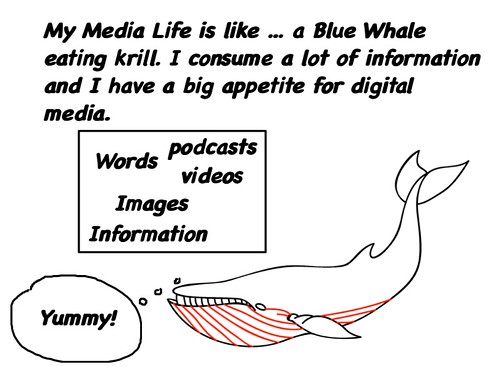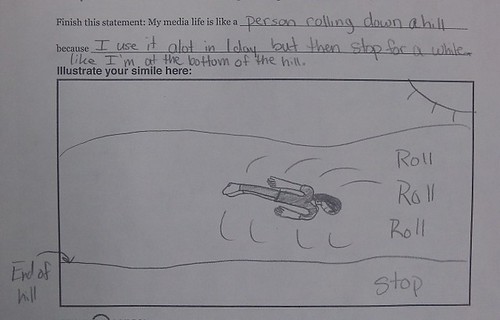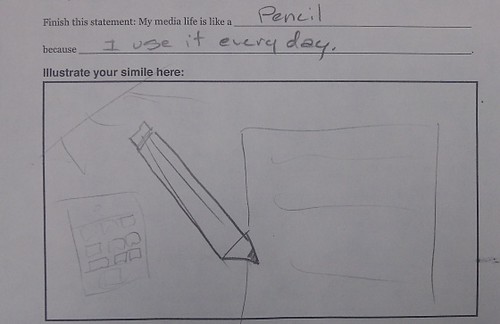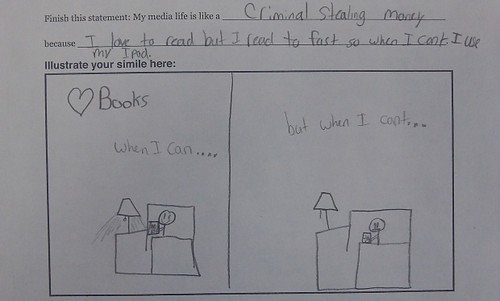It was a fair number of years ago (back in 2006) now that I hopped on a plane and flew across the country to Chico, California, to take part in an Advanced Technology Institute with the National Writing Project. It was one of those weeks that forged connections that remain powerful and strong even today. And the work we did in exploring writing and reading, and digital spaces, moved my own ideas forward. I started this blog during that week, learned about stopmotion animation, and brought along a new device on the market: a Flip camera. While these little handheld video cameras are ubiquitous now, they were just a curiosity back then.
And I wanted to figure out how I could use my little white Flip for something that would push my thinking about digital composition. I ended up with a poem I called Blink, Blink, Blink. But not just a poem. It was a poem with a video component that became quite complicated as I dove into it. I conceived it as project in which three videos would be running together, at the same time, recreating the idea of a human face but with multiple people being part of the larger composition. Even today, it is difficult to explain what I was after.
What I did was ask the folks in the Advanced Institute if they would allow me to film them, but in an odd way. First, I filmed their eyes – left and right. Then, I filmed their mouths, saying the refrain of “blink, blink, blink.” I got more than a few strange looks when I asked to film their eyeballs. Luckily, this was a group of creative people, looking to the leading edge of digital writing. Everyone agreed, even though they could not get their heads around what I was after.
On the plane ride home, in the airport, I began to edit the videos, and when I got home, I worked with HTML to craft a webpage that closely captured my vision. For a while, I hosted it at my old band’s server space and the videos were in the old Google Video space. A few months ago, I noticed that Google had moved the videos over to YouTube (that must be odd, to stumble across the two eyeball videos without any context). Meanwhile, the server space for the webpage went dark, and all of my options for hosting the page in a way that would allow three videos to run simultaneously (which is critical to experiencing the poem) ran into walls. Most would only allow one video to run at a time (Glogster, Google Spaces, this blog, a wiki page, etc.)
Then, the other day, I saw this post that Google Drive now can host HTML as if they are webpages. Aha! I went through the steps and sure enough, it worked! The poem does not quite live up to my vision of it, but it marks a place in time for me and is still interesting to watch. If you run all three videos, and keep the “nose” centered on the screen, it really does seem like a human face reading the poem, but with the collective experience of many people. The audio is tinny, but that was the early Flip camera.
Take a look and see what you think. I’d love to get feedback.
Peace (in the composing),
Kevin
PS — here is a reflection I recorded as I was composing the poem.









